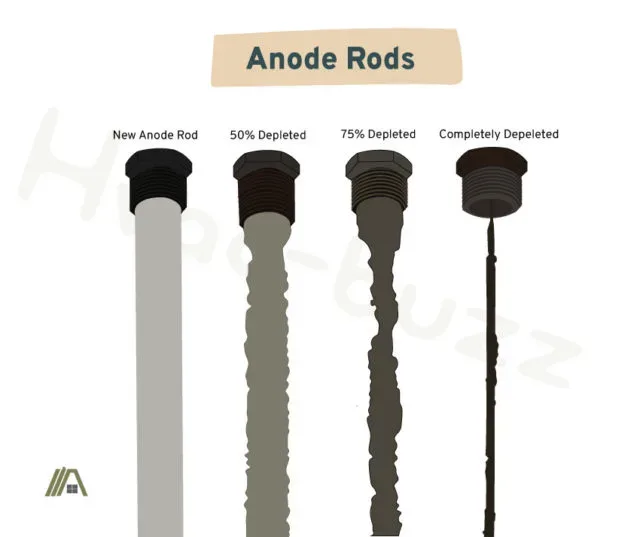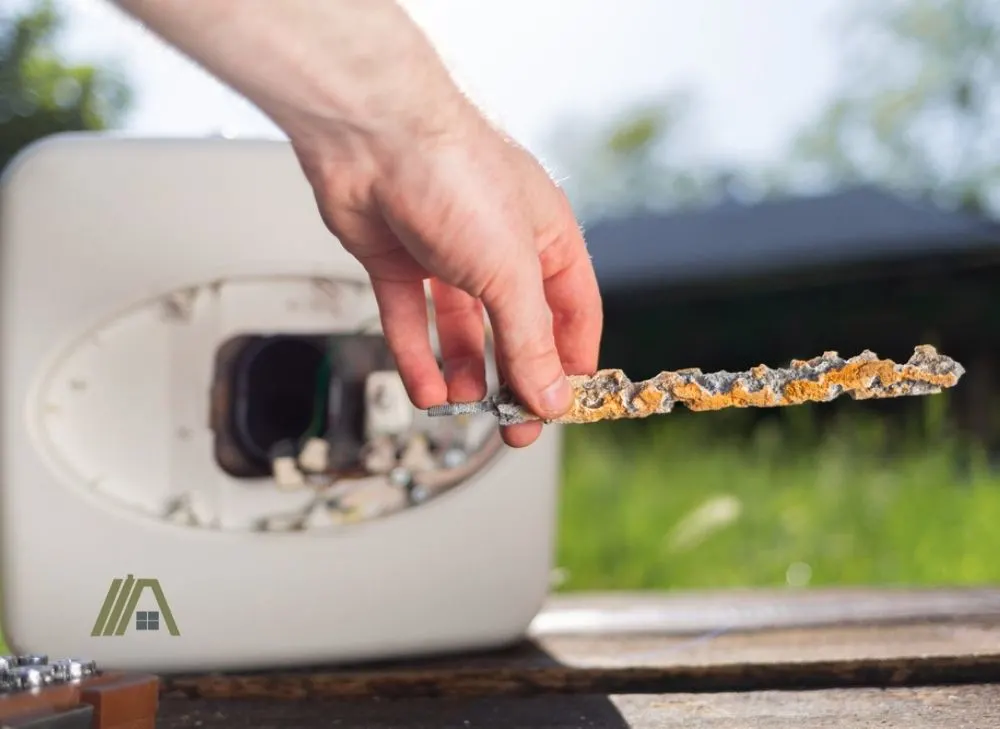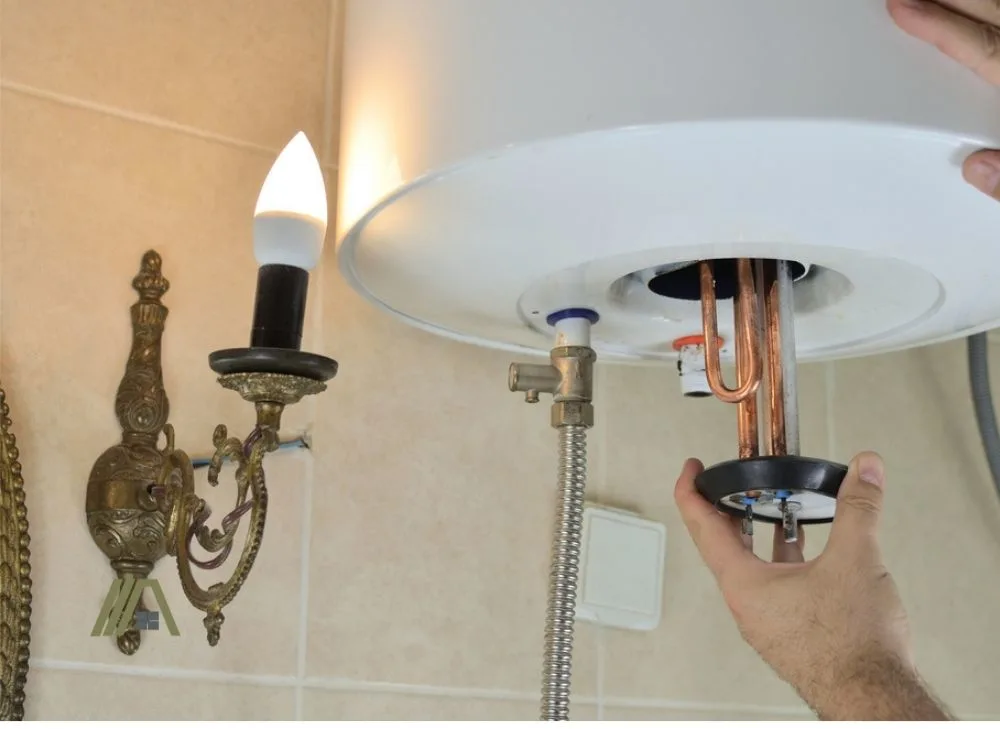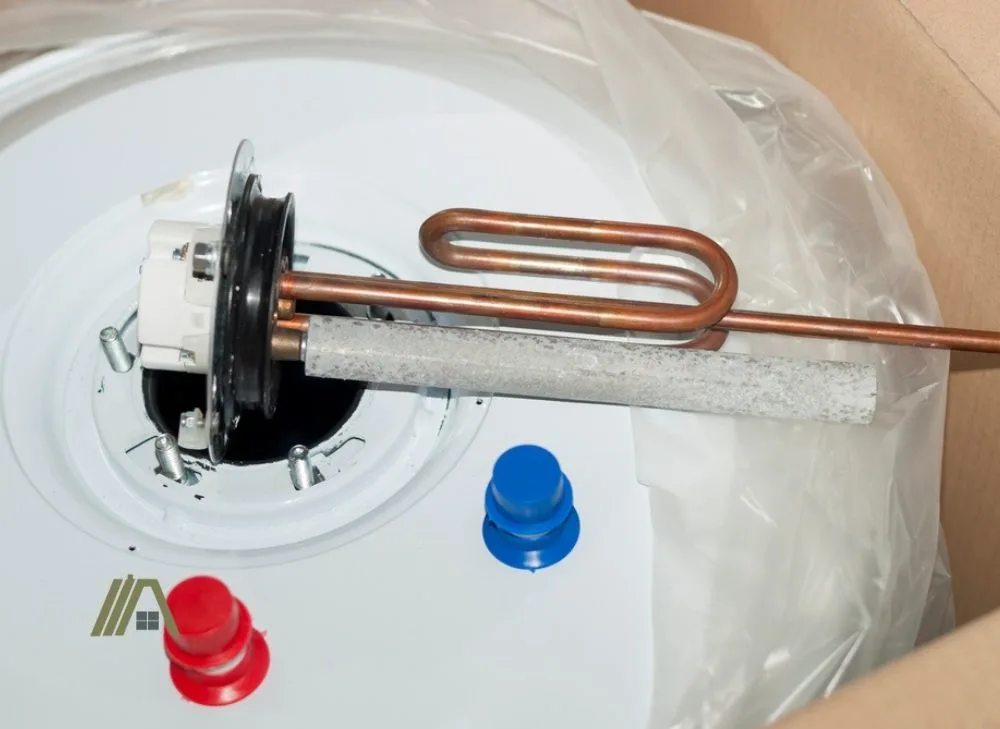Many people are making the swap to powered anode rods. Many are attracted to the low maintenance or its ability to work in any water conditions. Others are desperate for a solution to get rid of their stinky water. Some might still be put off by the price, or even just by the fact that they are supposed to work in all conditions.
Yet, the price of these devices is often a sticking point for people. So, the big question hangs in the air—are powered anodes worth it? Or is it all marketing hype? Powered rods are capable of doing all that they are said to, but their “worth” will depend on what it is you value. Let’s directly compare certain aspects of powered and sacrificial anodes.

On average, users report powered anode rods to be worth the cost. They deliver on what they claim, i.e., optimal tank protection, long lifespan, low maintenance, and the ability to work in all water conditions. To avoid the most common issue—faulty manufacturing—go for a well-reputed and high-quality brand.
Anode Rod Design and Function
Powered Anode Rods
Powered anode rods are designed to last for a long time, much longer than a sacrificial anode. Ideally, a powered anode will be able to last for your water tank’s entire lifespan.
This is largely possible due to the fact that the portion of the rod that comes in contact with water is made with titanium, a conductive and highly corrosion-resistant material.
These rods make use of a minor electrical current to keep corrosion at bay and prevent the build-up of mineral deposits (limescale) on the anode and the tank. Powered anode rods are able to automatically adjust the current’s power to your home’s water conditions.
Sacrificial Anode Rods
Sacrificial anode rods are only meant to last a few years before replacement. They are made of metals that are more reactive than the material of your tank, keeping corrosion at bay by attracting corrosive elements to themselves instead.

They are typically made from either magnesium or aluminum. The former is better for homes with softened water, whereas the aluminum rods are better for tanks with hard water.
“Zinc” anode rods also exist but are actually a predominantly aluminum alloy with a small amount of zinc. Zinc anodes are generally used for well water or water with an eggy smell.
Powered vs Sacrificial Anode Rods
Let’s start getting into the nitty-gritty. More specifically, let’s first take a closer look at the cost and maintenance differences between powered and sacrificial rods, as these are likely two of the most important factors in your decision.
Cost Difference
Depending on what kind of rod you buy, the cost will vary greatly even among sacrificial rods.
- Aluminum anode rods are the cheapest and can be found for $15-25.
- Zinc anodes are slightly pricier at around $25-40.
- Magnesium rods are the most expensive at anywhere from $30-70.
Powered anode rods are much more expensive than any of these, usually found at around $150. They also do have a running cost, though this is allegedly less than $2 a year.
However, while powered anodes may have a higher upfront cost, they may actually be cheaper in the long run, depending on your situation.
If you replace your anode rods yourself and only need to replace them every 5 years, using aluminum or zinc rods will likely be cheaper than a powered rod over a 20-year period.
However, if you are replacing your rods any more frequently than that, a powered rod is actually an equivalent or cheaper option.
Furthermore, it’s important to take into account how much anode rod replacement costs if you do not do so yourself. While prices will vary, it is likely you will need to pay a plumber between $200 and $300 per anode replacement.
Table Summary
| Powered Anode Rods | Sacrificial Anode Rods |
| They can last up to 20 years. | They can last a range of 1-5 years. |
| The cost can be up to $170. | They often cost about $15-$45. |
| The rod does not corrode. | The rod corrodes and must be replaced about every 5 years. |
| They are suited for hard water and maybe soft water. | Depending on the type, they can be suited for hard, soft, and well/smelly water. |
| The current rectifier must be plugged into an outlet. | No electric charge is needed. |
Maintenance Comparison
Powered anode rods, due to their long-term design, shouldn’t need any major maintenance unless something goes wrong and the rod fails.
On the other hand, sacrificial rods will need full-out replacement every 3-5 years, on average. Depending on the quality and content of the water in your home, however, replacement may be needed more frequently.
On top of this, sacrificial rods are designed to corrode and rust. This does create the potential for your anode to seize, or become stuck due to corrosion near the threads.
A seized anode will increase the time and effort needed to replace the rod. You may need to invest in equipment, like an impact wrench, so the cost could increase. The cost would also be higher if you are paying someone to remove the seized anode for you.
Comparing Performance
Based on the water content as well as any specific problems the water might have, such as smell, a sacrificial anode rod may work better than a powered anode rod and vice versa.

For sacrificial anode rods, specific types (magnesium, aluminum, etc.) may work better than others.
Hard Water
Hard water contains more minerals and leaves more deposits than other types of water.
Because of this, the anode rod suited for hard water would have to be able to withstand these high mineral concentrations. This would include both aluminum sacrificial anodes and powered titanium anode rods.
Powered anode rods have the added advantage over aluminum rods of being able to reduce limescale accumulation associated with hard water, while sacrificial anode rods are less capable of this.
Magnesium sacrificial anode rods are not well-suited for hard water because they are too reactive and would corrode more quickly than aluminum rods.
Softened Water
While hard water has more minerals dissolved in it, soft water contains more corrosive substances.
Magnesium is highly reactive, so it would be able to handle the high amounts of corrosive substances, although it would need to be replaced more frequently.
An aluminum rod, on the other hand, would not be able to keep up with the number of ions in the water and the tank would start to corrode in addition to the rod. Yes, the rod would “last” longer, but it will not fully achieve its purpose and the water heater tank’s life would be shortened.
As far as how a powered anode rod would fare, they would handle the conditions just fine but with no added advantages, unlike magnesium rods, which might add health benefits to the water.
When deciding between magnesium and powered anode rod for softened water, it is wise to consider costs, durability, and maintenance.
Smelly or Well Water
The best type of sacrificial anode rod for smelly or well water would have to be aluminum/zinc anode rods.
The inclusion of zinc handles unpleasant smells. Aluminum would also help in the case of well water since it often has higher levels of dissolved minerals, which would liken well water to hard water.
Powered anode rods would also be good in a smelly/well water scenario, as most models also claim to be able to kill the bacteria that produce the smell.
Powered Anodes Have a Long Lifespan
Sacrificial anode rods are literally designed to wear away over time. While aluminum rods tend to last longer than magnesium ones, you are still only looking at an effective lifespan of 3-5 years.
As such, powered anode rods are clearly triumphant when it comes to lifespan. Some popular models are made to last more than twenty years!
If for whatever reason, they do not, and you have complied with the terms of the warranty, your powered anode rod could be replaced for free within the first twenty years. Sacrificial anode rods do not come with a warranty.
Powered Anode Rods Require an Electrical Outlet
By now you know that powered anode rods utilize a small current in order to protect against corrosion. The current rectifier must be plugged into an electrical outlet for this current to be produced.
Because of this need, the powered anode needs an electrical outlet just like the water heater does. This may complicate things if the nearest outlet is already full and wires are not long enough to accommodate for relocation.

On the other hand, all you need to remove and install a sacrificial anode rod is:
- An 11/16 inch socket wrench
- I recommend the TIGHTSPOT 50-piece Impact Socket Pro Set (amazon link) for its high ratings and lifetime warranty.
- Work gloves (the rod may be hot)
- I recommend the Gorilla Grip Slip Resistant All Purpose Work Gloves (amazon link) for their range in sizes as well as uses.
It will not require any additional wiring or extension cables, which is good because water and electricity are a volatile combination.
What Are Users Saying?
Powered anode rods sound great in theory, but it’s right to be skeptical about switching to a new type of device.
It does appear, however, that the overall consensus on powered anode rods is that they work great, just as advertised.

Many people report that their powered anodes have cured their smelly water. Others confirm that it has been several years since installation with no problems.
It appears that for the most part, those who have swapped over to powered anode rods are happy with their decision.
With that said, not everything will always be fine and dandy. Like with any product, some potential problems do exist.
Amongst those who have had issues with powered anode rods, the most common complaints seem to be centered around faulty manufacturing.
A handful of users have reported leaking from the top of the anode, faulty threading, and missing parts.
Additionally, while most users appear to be happy with their powered anode’s odor elimination abilities, a few have reported little to no change in their water’s smell.
Top 3 Powered Anode Rods Available
As of the moment, Corro-Protec Powered Anode Rods (amazon link) seem to be dominant in terms of popularity. The company claims to “fit any hot water tank on the market,” and their rods come with a 20-year warranty.
To meet their sizing claim, Corro-Protec offers anode rods in three different sizes, meant to handle tanks from anywhere between 10-120 gallons. Additionally, they offer a model designed to fit Bradford White water heaters, a heater brand that does not fit standard anodes.
The A.O. Smith Powered Anode Rod System (amazon link) is considered second to Corro-Protec. A.O. Smith offers one size of anode rod, suitable for 30-50 gallon residential water tanks.
Last on this list is the STOLTCO Water Heater Powered Anode Rod Kit (amazon link). While it comes in one size only, STOLTCO’s powered anode rod can automatically adjust to protect tanks with a capacity of anywhere from 20-150 gallons.
Sources
https://epn.org/top-10-best-powered-anode-rod-for-hot-water-heater-reviews/
https://homeinspectioninsider.com/powered-anode-rods/
https://plumbingnav.com/water-heaters/anode-rod-by-water-type/

